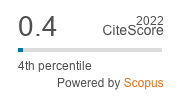Pollination potential of stingless bee Tetragonula iridipennis Smith. (Hymenoptera, Apidae) in Pumpkin (Cucurbita moschata Duchex Poir)
DOI:
https://doi.org/10.33307/entomon.v50i1.1414Abstract
An experiment was conducted to investigate the pollination potential and effectiveness of the stingless bee (Tetragonula iridipennis Smith.) on pumpkin. The abundance and diversity of foragers in male and female pumpkin flowers were assessed by measuring the number of foragers per flower per minute. The pumpkin fruit set and yield were evaluated under three different conditions: open pollination, bee pollination, and pollination exclusion. The foraging rate of bees was higher in male pumpkin flowers (0.22 bees/flower/min) than in female flowers (0.14 bees/flower/min) on the 45th day of flowering. Foraging time was longer on male flowers (40.66 seconds) than on female flowers (35.33 seconds). In terms of yield, the bee-pollinated pumpkin field achieved an average of 3.15 fruits per plant, compared to 3.12 fruits in open-pollinated plots. The bee-pollinated field also produced heavier fruits, with an average fruit weight of 3.45kg (4.12% increase over open pollination). The total yield in the bee-pollinated plot was 36.1 t ha-1, compared to 34.6 tons in the open-pollination plot. Colony monitoring showed a 1.93 per cent weight gain, from 897 to 924g. Foraging activity at the hive entrance was maximum during the morning hours (07 00–09 00), with on average 10.58 outgoing bees and 8.19 bees at peak nectar forager activity. In contrast, the pollination exclusion condition failed to produce any fruit, emphasizing the positive impact of T. iridipennis on pumpkin pollination and yield, particularly during peak flowering periods.
Downloads
Published
How to Cite
Issue
Section
License
Copyright (c) 2025 Association for Advancement of Entomology

This work is licensed under a Creative Commons Attribution-ShareAlike 4.0 International License.


